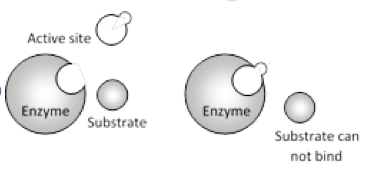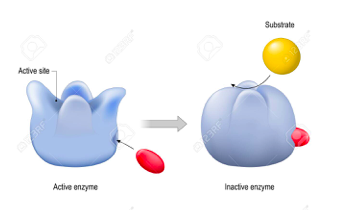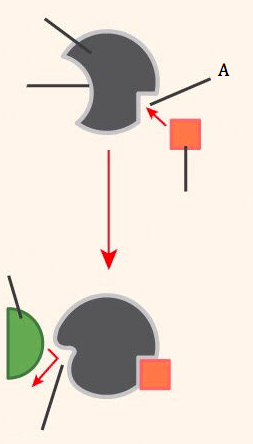
AP BIO Unit 3
Assessment
•
•
Biology
•
11th - 12th Grade
•
1K plays
•
Medium
Improve your activity
Higher order questions
Match
•
Reorder
•
Categorization
.svg)
actions
Add similar questions
Add answer explanations
Translate quiz
Tag questions with standards
More options
20 questions
Show answers
1.
Multiple Choice

Which of the following is NOT true regarding enzymes.
They are made of proteins
They lower the activation energy of a reaction
They are non-specific and can bind to any substrate
The increase the rate of a reaction
2.
Multiple Choice

Which option best describes "A"?
Activation energy with enzyme
Activation energy without enzyme
Energy released as heat
Products produced
3.
Multiple Choice

The location where the enzyme and substrate bind is the...
allosteric site
inhibition site
reaction site
active site
4.
Multiple Choice

This image shows...
Competitive Inhibition
Enzyme denaturation
Noncompetitive Inhibition
Normal enzyme function
5.
Multiple Choice

This image shows...
Competitive Inhibition
Enzyme denaturation
Noncompetitive Inhibition
Normal enzyme function
6.
Multiple Choice

What is the term for "A"?
Allosteric site
Inhibitor
Substrate
Enzyme

Explore this activity with a free account
Find a similar activity
Create activity tailored to your needs using
.svg)

Cellular Respiration
•
9th - 10th Grade

Photosynthesis & Cellular Respiration
•
9th Grade

Cell Respiration
•
9th - 10th Grade

Photosynthesis & Cellular Respiration
•
9th - 12th Grade

Photosynthesis Review
•
9th - 10th Grade

Cell Respiration
•
9th Grade

Respiration Cellular
•
10th Grade

Cellular Respiration Quiz H
•
9th Grade











